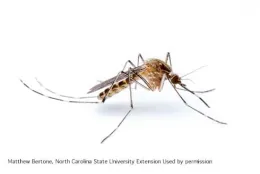
What is buzzing around my ears??? Oh drat, it is an adult female mosquito, that tiny annoying blood-sucking creature we all love to hate. But mosquitoes are more than annoying. They can spread West Nile virus (WNV), which can make people and animals sick and even cause death. A June Modesto Bee article stated the virus had been detected in mosquitoes in Stanislaus County (https://www.modbee.com/living/health-fitness/article288972280.htmlhttps://www.modbee.com/living/health-fitness/article288972280.html). Fortunately, while the virus has been located several counties in the state (see California's WNV tracking website: https://westnile.ca.gov/), it has not yet been transmitted to humans.
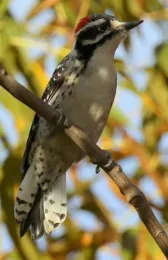
There are over 3,000 mosquito species globally. Happily, only a few are known for biting humans and spreading disease. The main source of WNV is the Culex genus of mosquitoes, which are widespread throughout California. Along with humans, they bite and feed on other animals including birds and horses. Culex mosquitoes are generally active in the summer and early fall, usually biting from evening through the morning.
Meet Some Mosquito Hunters
However, often overlooked and under-appreciated are the mosquito eaters! Mosquitoes, both adults and/or larvae, are an important part of the diets of the following bats, birds, amphibians, and other insects:
Bats are the primary predators of night-flying insects, including mosquitoes. One small microbat can consume up to 3,000 mosquitoes in one night. Two common local species are Mexican Free-tailed bats (Tadarida brasilliensis) and Little Brown bats (Myotis lucifugus).
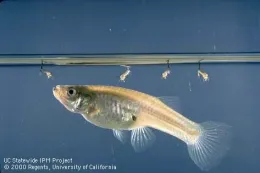
Barn swallows (Hirundo rustica) are one of the most widespread species of swallows in the world and are champion mosquito eaters.
Downy woodpeckers (Dryobates pubescens) are the smallest woodpecker species in North America. While they are omnivores, they feed primarily on insects. During the summer months, mosquitoes provide a significant portion of their diet.
Mosquito fish (Gambusia affinis) are freshwater fish who are native to the southern and eastern parts of the USA. They were introduced to California in the 1920s for control of mosquito larvae. As their name suggests, they are voracious eaters of mosquito larvae consuming about 500 in a single day.
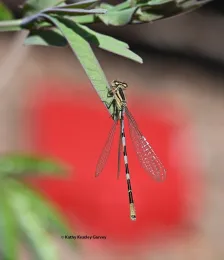
Red-eared slider turtles (Trachemys scripta) are another introduced species, initially released by pet owners who no longer want them. Juveniles of 1 -2 years are ravenous predators of mosquito larvae and can eat up to 1,000 – 2,000 larvae per day.
Frogs and tadpoles – Many species of frogs and tadpoles feed on mosquito larvae including tree frogs. These small predators feed on mosquitoes both during larval and adult stages. Toads will also eat mosquitoes.
Dragonflies and Damselflies are carnivorous insects who have been feeding on mosquitoes for over 100 million years! They help reduce mosquito infestations by eating their larvae before they can grow into adults. Adult dragonflies can also eat more than 100 mosquitoes per day.
Crane Flies aka “Mosquito eaters,” do not eat adult mosquitoes as their nickname implies.
Spiders! These are nature's pest experts, eating up to 800 tons of insects annually, which includes mosquitoes!
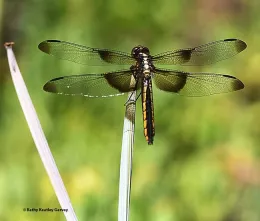
Reducing Mosquito Populations
Mosquitoes require standing water to lay their eggs and for their larva to thrive. While there are many mosquito predators in nature, it is important to also minimize mosquito breeding habitats (the female can lay her eggs in a capful of water!) and eliminate them. If you have a pond, fountain, or pool, ensure the water is aerated.
If you see standing water or pools and ponds that are not being maintained, contact your local mosquito and vector control agency. Stanislaus County has two: East Side Mosquito Abatement and Turlock Mosquito Abatement District.
Gardens filled with a diversity of plants that attract pollinators, insect feeders, and birds will also attract a variety of creatures that eat mosquitoes. In addition, by reducing the use of pesticides, or using less toxic or nonchemical alternatives, will also help protect mosquito feeders.
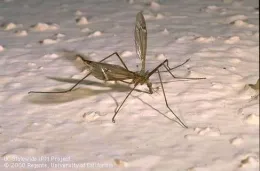
By following these guidelines and by wearing protective clothing and mosquito repellent at dusk and dawn, we can protect ourselves from mosquito bites and potentially being exposed to the West Nile Virus.
You can read more about mosquitoes in the following publications from UC IPM:
Mosquitoes Quick Tips: https://ipm.ucanr.edu/legacy_assets/PDF/QT/qtmosquito.pdf
Mosquitoes Pest Notes: https://ipm.ucanr.edu/legacy_assets/PDF/PESTNOTES/pnmosquitoes.pdf
Mosquito Management for Ponds, Fountains and Water Gardens:
https://ucanr.edu/blogs/blogcore/postdetail.cfm?postnum=14396
Denise Godbout-Avant has been a UC Cooperative Extension Master Gardener in Stanislaus County since 2020.


